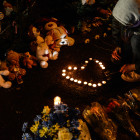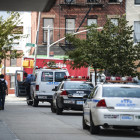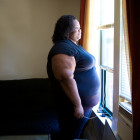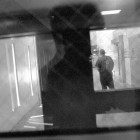
Sandy Hook
|
There’s a stretch of road in Newtown, Connecticut, 524 paces long. It leads from the official town Christmas tree at the corner of Riverside Drive and Washington Avenue up a hill and down again to a soft bend in the road at Dickinson Court where a sign hangs from a wooden post decorated with curling back wrought-ironwork that reads:
Sandy Hook School
1956
Visitors Welcome
There, next to a staging area for emergency workers and police investigators, sits a sprawling memorial to the 20 children shot and killed by a young man who was barely an adult himself. Law enforcement officials are still piecing together what happened that morning, but for now they say that Adam Lanza, 20, after killing his mother and armed with an assault rifle and some handguns shot and his way into the Sandy Hook School. He killed six staff, 20 children, and then himself. What used to be a nondescript road that connected the struggling heart of this small central Connecticut town to a municipal building has been transformed into an almost sacred path divided by a long line of orange emergency cones.


